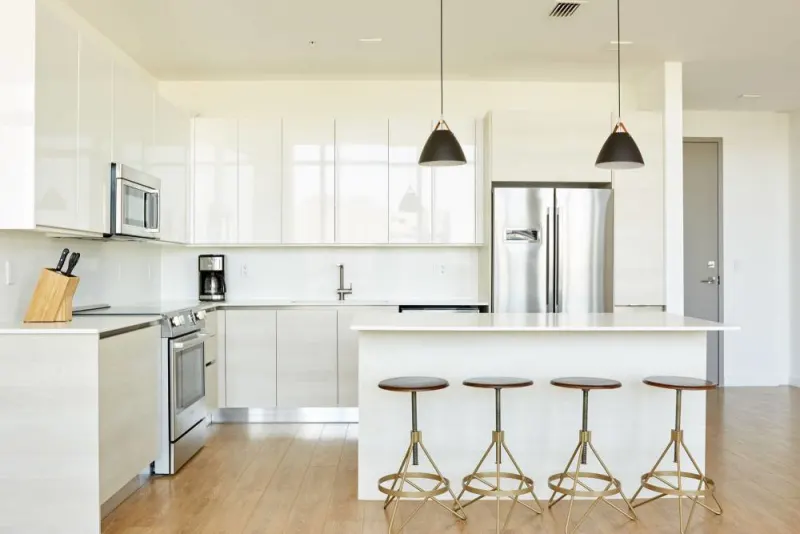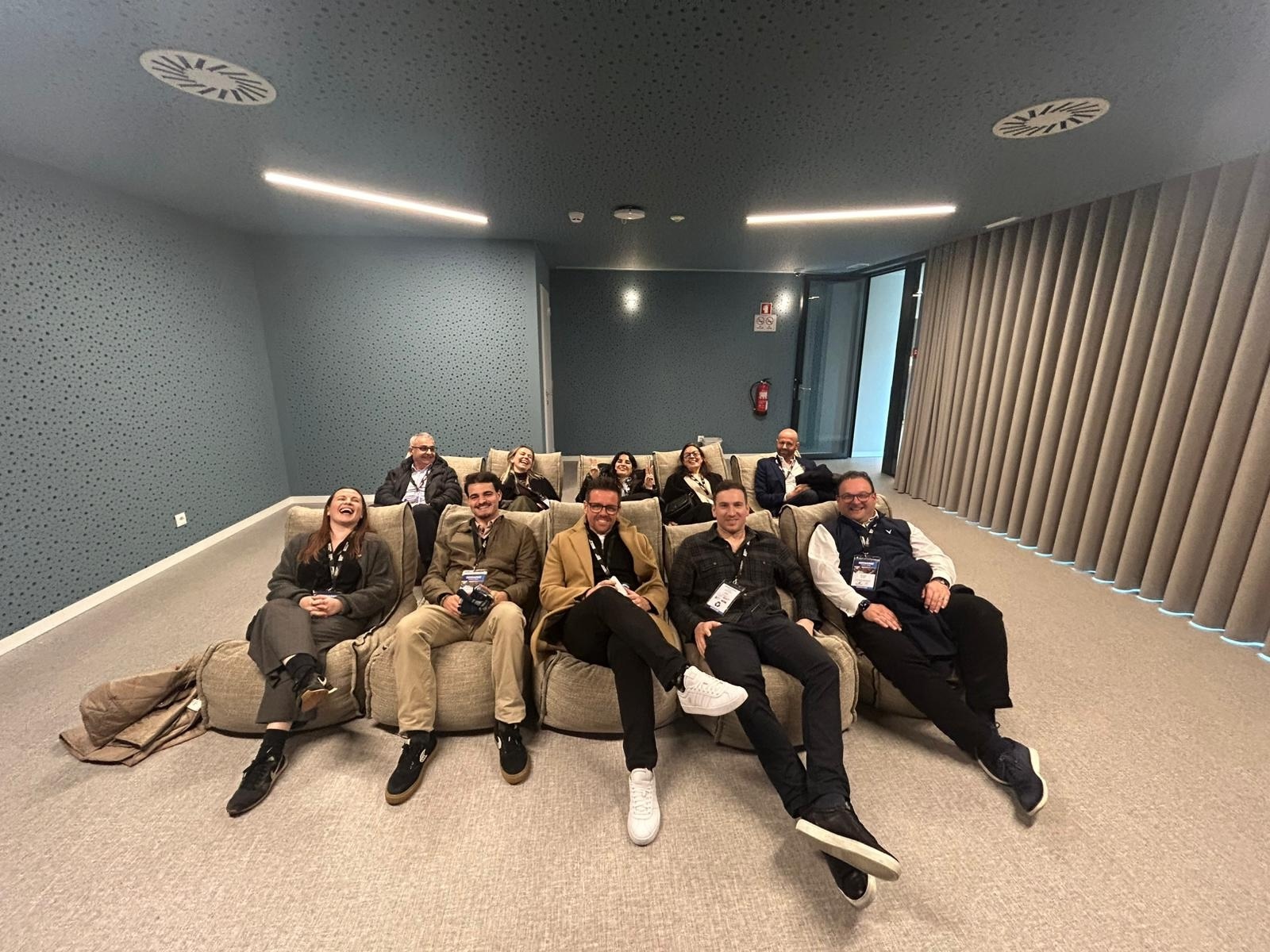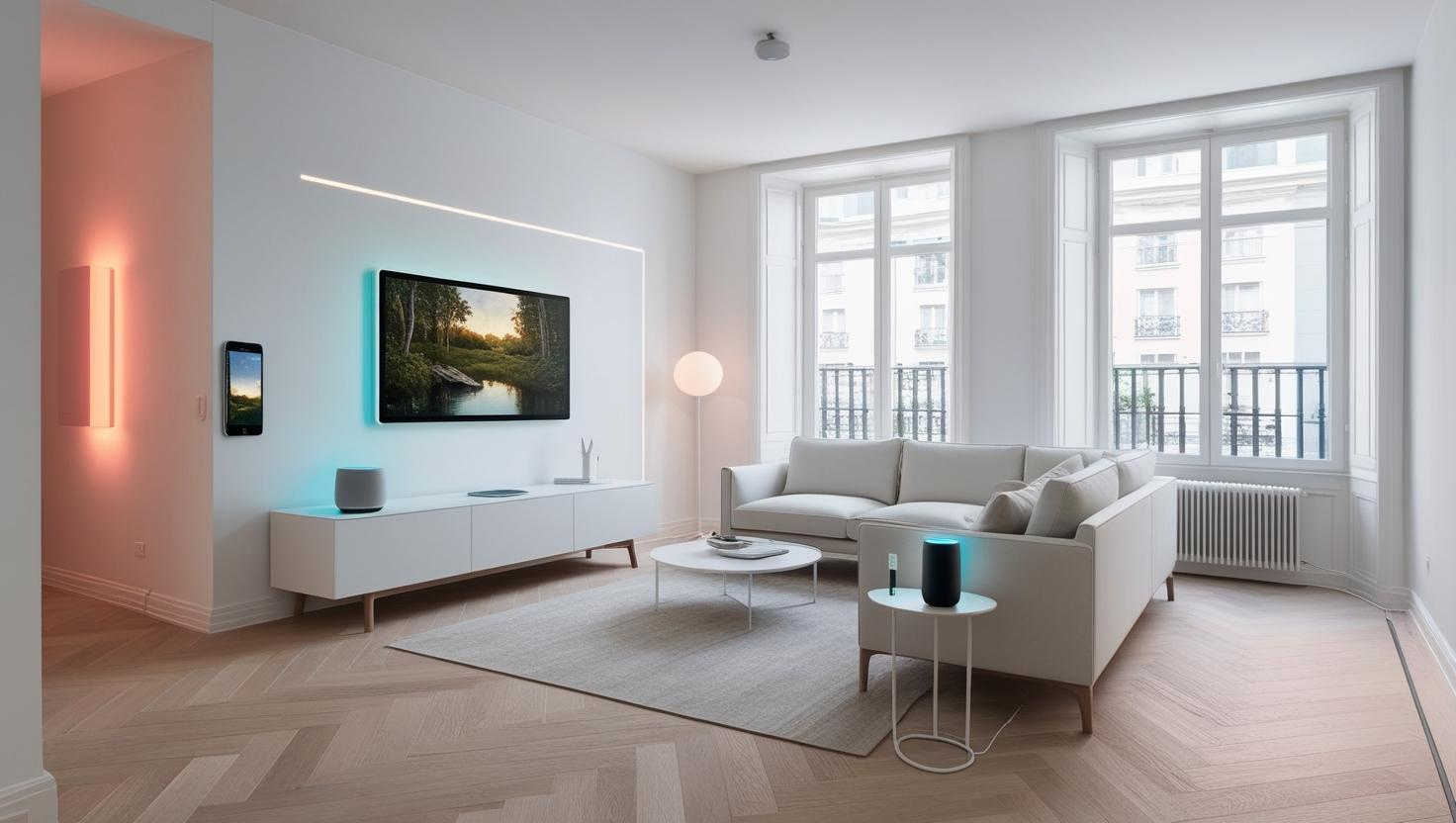SAN editor George Sell focuses on six trends which will resonate across real estate and hospitality in 2022.
• Household names become BTR players
It definitely feels like we are at a tipping point in the UK regarding attitudes to home ownership and renting. A growing acceptance of renting, and the subsequent erosion of the stigma surrounding it, is coming from both ends of of the age spectrum.
A younger, predominantly millennial, demographic is weighing up the financial and lifestyle sacrifices necessary for them to get a foot on the housing ladder in major cities and has decided it simply isn’t worth it. And swathes off downsizers are moving in to rental communities for seniors having banked the unprecedented financial good fortune resulting from being homeowners of the baby boom generation.
For both demographics, there are some interesting new brands springing up to serve the market, but perhaps the most significant development in BTR is the entrance of household names with big plans for the space, each with obvious synergies between renting homes and their core businesses.
John Lewis Partnership has announced plans to build 10,000 BTR homes over the next few years. The retailer says it wants to address the national housing shortage and support local communities. It said the plans would give the firm a stable, long-term income, as well as providing new job opportunities.
Tenants will have the choice of renting fully furnished units supplied with John Lewis products or using their own. Around 7,000 of the initial 10,000 homes would be on sites in the existing John Lewis property portfolio, and will range from studio flats to houses.
And if you thought that sounded ambitious Lloyds Banking Group’s new BTR division, Citra Living, has plans to become the biggest BTR landlord in the UK. It is targeting 10,000 units by 2025 and 50,000 by 2030.
Its prime motivation is reportedly continued low interest rates which have made its mortgage lending business less profitable. But reading between the lines it’s hard to escape the conclusion that Lloyds has seen the writing on the wall – home ownership is not the Holy Grail it once was, and the mortgage market is likely to contract.
When household names of the magnitude of JLP and Lloyds take the plunge, why wouldn’t the likes of Marks & Spencer, Halifax, or even Amazon be the next to get in on the act?
• Suburban and single family BTR
BTR in the UK is still mainly associated with millennial renters in city centre locations. But while the purpose built single family and suburban BTR segment is at a relatively early stage in its development, the few major players in the space have serious ambitions and deep pockets to fulfil them.
Examples include Moda Living, which has partnered with investment manager Ares Management Corporation to develop suburban BTR units across the UK. Through direct development with Caddick Construction and partnerships with local developers, the platform will target the delivery of more than 5,000 “high-quality purpose-built homes” to the UK market with a gross development value in excess of £1 billion by the end of 2025.
Sites for the first 1,000 homes have been secured and construction is due to start in Q1 2022. The properties will have an average monthly rent of £800 to £900. The homes will be comprised of one to four bedrooms and located in “select suburban neighbourhoods across the UK that are experiencing significant shortages of price-accessible, quality rental housing”.
Johnny Caddick, director of Caddick Developments and chief executive at Moda said: “We believe that now is the right time to launch a unique product into this space with a point of difference and we foresee strong nationwide demand for the offer. The single family housing proposition focuses on great lifestyle with great service. We believe this offers people more than bricks and mortar and genuine pride of place for the long-term.”
Other players include Gatehouse Bank and TPG Real Estate Partners, which have announced a joint venture to develop about 2,500 family rental homes. The £500 million JV will focus on suburban, purpose-built family rental homes in the North and Midlands. It will start out with a seed portfolio of four sites, which were acquired from Countryside Properties, a partnership that intends to work together again in the future. The properties for the launch include 321 single family homes in Midlands, Greater Manchester, and Merseyside.
Apache Capital has launched Present Made, which it described as the UK’s first branded, purpose-built single-family build-to-rent platform. Present Made will develop, own and operate an initial pipeline of 3,000 suburban homes in three locations in the Oxford-Cambridge crescent. The development programme, based on modular construction, is valued at £1.6 billion.
Apache says its ESG-led development agenda will include biophilic designs, amenities and services intended to help promote mental and physical health and wellbeing, as well as sustainable living. The move into single-family completes Apache’s suite of residential investments, joining its ventures in senior living, PBSA and multi-family BTR through its £2 billion investment in Moda Living.
“Four years in the making, Present Made from the outset has been designed around our future residents’ needs and the growing importance of ESG considerations to both our residents and investors alike,” said Apache Capital managing director Richard Jackson. Present Made communities will feature soft play areas for children as well as on-site dining, working and exercise facilities.
A shortage of suitable housing combined, wage stagnation, and house price inflation does not only affect potential homeowners in cities. It’s a problem across the country, and developers are now serious about serving a market that has been overlooked in the early stages of the purpose built rental sector.
• Institutional gold rush for PBSA sector
A trend that started in earnest this year is likely to gain even more momentum in 2022. Even though the pandemic has seen PBSA developments struggle with occupancy, institutional investors are very keen on the sector and are putting their money where their mouths are.
In Europe, Round Hill Capital has formed a €1 billion joint venture with Canada Pension Plan Investment Board. The JV, targeting assets in excess of €1 billion, will be one of the largest European student accommodation partnerships. It will invest in existing assets and new developments across continental Europe. The assets will be operated primarily by Nido Student, Round Hill Capital’s specialist PBSA brand.
In France, UXCO Group, the Brookfield-backed operator has acquired a development site next to its existing ECLA student asset. It will build a further nine-story building to expand the ECLA campus. Once completed in September 2023, it will be the largest private student residence in continental Europe with more than 1,800 beds.
In the UK, Singaporean investor Mapletree is buying four Vita Student residences from Vita Group for more than £165 million. The portfolio, which totals 917 beds, consists of properties in Leeds, Nottingham, Bristol, and Exeter. Vita Group will continue to operate the sites under the Vita Student brand.
Mapletree’s deputy group chief executive officer Chua Tiow Chye summed up the attraction of the PBSA sector for investors: “Mapletree will continue to expand its global footprint in this asset class for its attractive long term growth prospects supported by strong fundamentals of domestic and international students’ demand.”
Elsewhere student living firm Scape and Dutch pension fund APG have agreed a £500 million joint venture that will develop and operate student accommodation schemes in London and south-east England. Robert-Jan Foortse, head of European real estate at APG added: “It is our belief that the UK student and the UK housing market offer very compelling investment opportunities that provide our clients with long term stable returns. Both face long term favourable demand through continued trends such as increasing global international student mobility, growing domestic student population and growing household formation.”
And this is not just a European phenomenon, Singapore-based Ascott Residence Trust has been looking to the US, acquiring PBSA assets in Texas and Chicago.
• Coliving goes mainstream
While the coliving sector has suffered a couple of high profile set backs over the last year, with WeWork ditching its move in to the space, and The Collective going in to administration. But neither of these cases are denting investor and operator confidence, and the developments of both companies have been taken on – Common is now operating the WeLive assets – and The Collective pipeline is being brought forward.
Several former directors of The Collective have set up a new company called Halcyon Development Partners to take on three London projects that were being built by The Collective in its role as developer for the DTZ Investment Management’s COLIV fund. Halcyon will deliver a 222-room development in Harrow, a 315-room project in Earlsfield and a 270-room project in Battersea. All three are due to launch in 2022 or 2023. Six of The Collective’s other assets have been acquired by one of its lenders, GCP Capital’s GCP Asset Backed Income Fund.
Elsewhere, the world’s biggest serviced apartment company Ascott has entered into an agreement to acquire a property in Paris for the development of its first lyf coliving property in Europe, lyf Gambetta Paris, which is set to open in 2024. Ngor Houai Lee, Ascott’s managing director for Europe, said: “The signing of the first lyf residence in Paris marks a key milestone in the development of our brand dedicated to coliving in Europe. We see strong potential for expansion in cities with a growing community of startups like Paris. lyf Gambetta Paris will offer travellers a new dynamic living, working and leisure experience where they can connect and enjoy private and collaborative spaces. We plan to open a total of 17 lyf properties in Australia, China, France, Japan, Malaysia, Philippines, Singapore, Thailand and Vietnam by 2025, and we will keep expanding with new projects in Europe.”
Also in mainland Europe, BTR and coliving asset manager Node has acquired fellow coliving developer Starcity Spain. The Spanish platform will start with the repositioning and restoration of nine city-centre properties in Barcelona and the development of purpose-built communities near transport hubs in major Spanish cities. All communities will be operated under the Node brand. Node, founded by former Blackstone managing director Anil Khera in 2016, is pioneering its concept of “curated living”, characterised by high-density urban rental communities with furnished studios, one-bedroom and shared-living accommodation for an all inclusive price with utilities and wifi included.
Earlier in the year, New York-based Common reached an agreement with Starcity to take over management of the majority of Starcity’s US portfolio. Common will acquire Starcity’s management contracts, but not its land or development assets, which include a planned 800-unit property in San Jose, California. The deal will bring an additional 1,000 existing units under Common’s management, with another 7,000 units in the pipeline. It will bring Common’s total portfolio to 7,000 units under management and 27,000 under development.
And in south-east Asia, HOMA has opened its Phuket Town property, a 505-unit community that it says “blends the benefits of a serviced apartment with the facilities of a four-star hotel”. Catering to both short and long stay guests, HOMA Phuket Town features high speed wifi, a coworking space, a fitness centre, café and restaurant, rooftop deck and 80-metre infinity pool overlooking Phuket Town, which includes a 50-metre Olympic-size lap pool, and a 24-hour concierge.
Luca Dotti, founder and managing director at HOMA, said: “I am delighted to announce the official opening of HOMA Phuket Town, our inaugural project, which introduces an innovative new style of living to Thailand’s hospitality scene. By combining affordable, eco-friendly apartments with upscale amenities, we can successfully bridge the gap between home comforts and hotel facilities, while also creating a sense of community living. This pioneering concept will be ideally suited to the Asia Pacific, and Thailand especially, where travellers are increasingly demanding spaces to work, rest and relax for extended periods. We look forward to welcoming our first residents and allowing local and international guests to ‘Live A Better Life’ at HOMA Phuket Town.”
A joint venture between Asia Capital Real Estate (ACRE), a global real estate private equity firm, and NOON Capital, a Thai multifamily housing developer, HOMA is aiming to invest more than US$250 million (approx. THB 8.4 billion) in six new projects across Thailand. HOMA Phuket Town will soon be joined by another location in Phuket, HOMA Cherngtalay, and a project in Chonburi province called HOMA Si Racha. In the next five years, the group aims to extend its collection to more markets in Thailand and across the Asia Pacific region.
To find out more about the coliving movement, check out All Together Now: The co-living and co-working revolution, a new book by Amy Frearson and Naomi Cleaver.
• Flexible workspace becomes national phenomenon
The sudden emergence of the Omicron variant and the prolonged nature of the pandemic is going to reshape the return to the office – again.
With so much uncertainty around, employers are looking for as much flexibility as possible when it comes to leasing office space, and traditional structures are increasingly being ditched in favour of workspace arrangements that allow individuals and companies to use space as and when they need it rather than entering stifling long-term arrangements.
The evolution and blending of coworking and flexible workspace has started in our major cities but will spread to every significant population and employment hub in the country.
We’ve already seen London start-ups such as x+why secure its first property outside the capital, and SAN has reported on new workspace schemes in locations as diverse as Leicester, Bristol, Cardiff and Luton.
The move is being driven by tech-savvy start-ups but also by office and real estate giants who have adapted to the new way of working more adroitly than others.
IWG – formerly Regus – has adopted the phrase “Welcome to generation flex” as its slogan. It has no fewer than 10 workspace brands worldwide and properties across the UK. After its well publicised travails, WeWork is signing up corporate clients to its flexible packages at an astonishing rate as it focuses intently – some might say belatedly – on making a profit.
And Grosvenor’s first flexible workspace venture, 25 EP in London’s Victoria, is an interesting precursor as to where the sector could be headed. Described as “Where leading hospitality meets flexible working”, its offer, rooted as it is in central London, will be adapted and tweaked for workers the length and breadth of the country.
• Multigenerational living
New developments aimed at particular age groups have tended to be focused on one tight niche – such as students or retirees.
But the concept of multigenerational living has many benefits and is one that is gaining serious traction.
The blueprint was set in the early 2000s by projects such as the Municipal Project for Intergenerational Housing in Alicante, Spain. Spread over three buildings and totalling 244 units, the project aimed to to resolve the serious problems faced by many low-income older persons living in inadequate housing conditions and experiencing isolation, loneliness and vulnerability.
Residents include low-income older persons over the age of 65 (78 per cent of residents) and low-income young people under the age of 35 (22 per cent of residents). Young people are involved on a voluntary basis in the communal organisation of everyday life in the buildings and neighbourhood, and in particular in cultural and recreational activities which take place in communal spaces. On the basis of a ‘good neighbour agreement’, each young person is in charge of taking care of four older people in the building, offering a few hours of their time each week to spend with the older residents.
The project’s residents have expressed how the project has increased their well-being, allowing them to be independent yet not alone, live in a decent home with a family-like environment and have a wide range of activities within reach. The young people report gaining knowledge and establishing real friendships with the older persons they assist.
Now a new wave of operators such as The Embassies are planning to tap in to the same social befits but are aiming at a much higher price point.
Founder Jan Garde says: “The one thing that everybody hates globally about senior living is that there are only old people around. Also, the pattern that comes back – people in a retirement community don’t feel old. They all see old people around themselves but they don’t feel as old. It has something to do with the inner perception of the outer perception, a sort of human programming error that society passed on.”
The Embassies properties will feature high quality “serviced living” for residents of a wide age spectrum, with a focus on health and wellbeing being incorporated in to a curated programme of activities.
The Embassies’ model is built on three pillars. Residents and visitors can make use of public restaurants and leisure facilities. A membership provides access to curated events, as well as to gym and spa programmes. In addition, residents can rent an apartment in one of the buildings on a permanent basis. And as a highlight of the global network, members have the opportunity to travel to different locations. The entire experience will be facilitated through the use of technology and to do that, The Embassies has partnered with Forward31, by Porsche Digital.
Florian Sonigo is the co-founder of Opalia Hotels & Residences which has a target audience of 50 to 70 years old. The model promotes inter-generational living and has two components; one is extended stay with all the facilities that a modern traveller needs. It would be perfect for the trendy digital nomad, where they can make it home for a couple of weeks or for a year. The second component is residences which are geared towards the older customer profile. The two components are inter-connected with public areas and facilities allowing people to mingle, interact in a natural way. The idea is founded on a holistic approach to wellbeing, taking nutrition into account, allowing for organic farm-to-table produce, as well as benefiting from gardening as a form of physical and mental activity.
Loneliness is widely cited as one of the biggest issues facing society, particualrly in urban areas, and especially among older demographics. Multigenerational iving can offer a profitable solution which offers numerous societal benefits.
What do you think the major urban living trends for 2022 will be? Drop me a line at george@internationalhospitality.media and let me know.









